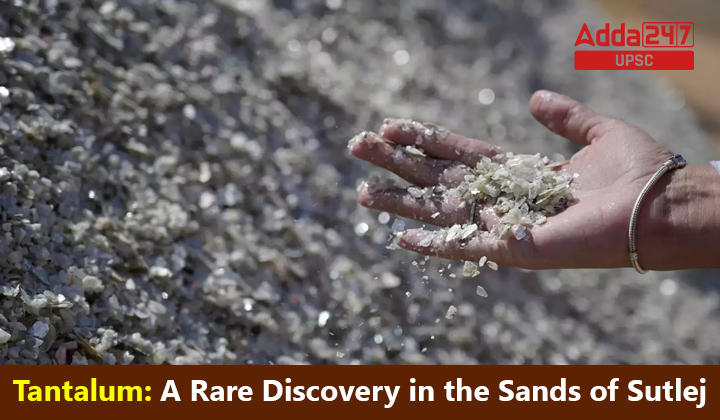Table of Contents
Tantalum, a rare metal with the atomic number 73, has recently made headlines due to its discovery in the Sutlej river sand in Punjab by a team of researchers from the Indian Institute of Technology (IIT), Ropar. Given the widespread use of tantalum in electronics and semiconductors, the team’s findings under the direction of Dr. Resmi Sebastian are significant not only for Punjab but also for India. In this article, we will delve into the intriguing world of tantalum, exploring its properties, history, nomenclature, and its crucial applications in various industries.
Tantalum: What Sets It Apart?
Properties of Tantalum
Tantalum stands out as gray, heavy, and exceptionally hard metal. One of its most remarkable properties is its high corrosion resistance, making it a valuable material in various applications.
When exposed to air, tantalum forms an oxide layer that is extremely challenging to remove, even in harsh chemical environments.
The metal’s ductility allows it to be stretched into thin wires without breaking, and its resistance to chemical attacks at temperatures below 150°C makes it a robust choice in challenging conditions.
Additionally, tantalum boasts an extremely high melting point, surpassed only by tungsten and rhenium.
Discovery and Naming
Anders Gustaf Ekenberg, a Swedish chemist, first discovered tantalum in 1802 in minerals obtained from Ytterby, Sweden.
Initially thought to be a different form of niobium, a chemically similar element, the distinction between tantalum and niobium was finally established in 1866 by Swiss chemist Jean Charles Galissard de Marignac.
Tantalum derives its name from the Greek mythological figure Tantalus, reflecting its insolubility in acids. Tantalus, a king in Greek mythology, faced eternal punishment, unable to quench his thirst or satisfy his hunger despite the tantalizing proximity of water and fruit.
Applications of Tantalum: Beyond Mythology
Electronic Sector Dominance
Tantalum’s prominence in the electronics sector is unparalleled. Capacitors made from tantalum have the unique ability to store more electricity in smaller sizes with minimal leakage compared to other types of capacitors.
This characteristic makes them ideal for use in portable electronic devices such as smartphones, laptops, and digital cameras. The miniaturization of electronic components owes much to the efficiency of tantalum capacitors.
Substituting Platinum and Diverse Industrial Applications
Due to its high melting point, tantalum serves as a cost-effective substitute for platinum in various applications. The rare metal finds are used in manufacturing components for chemical plants, nuclear power plants, and aerospace technologies.
Its resistance to bodily fluids makes it suitable for producing surgical equipment and implants, including artificial joints. Tantalum’s versatility extends to the production of components for missiles, highlighting its importance in defense applications.
Sutlej Discovery: Implications for Punjab and India
The recent discovery of tantalum in the Sutlej River sand adds a new dimension to India’s mineral wealth. Punjab, traditionally known for its agricultural abundance, now emerges as a potential source of rare metals crucial to modern industries.
Dr. Resmi Sebastian’s team at IIT Ropar has opened up avenues for further exploration and research, shedding light on the geological wealth of the region.
Conclusion
Tantalum, a metal with a rich history dating back to its discovery in 1802, has become a cornerstone of modern technological advancements. Its unique properties make it indispensable in the electronic sector, the aerospace industry, and medical applications.
The discovery of tantalum in the Sutlej river sand adds an exciting chapter to India’s mineral exploration, underscoring the importance of scientific research in uncovering hidden treasures beneath our feet. As we continue to unlock the secrets of tantalum, its role in shaping our technological future becomes increasingly apparent.



 TSPSC Group 1 Question Paper 2024, Downl...
TSPSC Group 1 Question Paper 2024, Downl...
 TSPSC Group 1 Answer key 2024 Out, Downl...
TSPSC Group 1 Answer key 2024 Out, Downl...
 UPSC Prelims 2024 Question Paper, Downlo...
UPSC Prelims 2024 Question Paper, Downlo...
